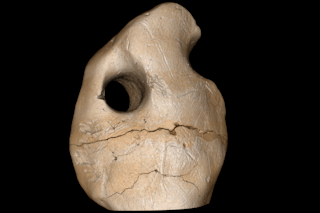Humans lived in South America many thousands of years earlier than previously believed, during the height of the Last Ice Age. A new archaeological study discovered this by analyzing a trio of necklaces made from ground sloth bones.
The project wades into an ongoing debate over when and how Homo sapiens, who evolved in Africa and first spread to Europe and Asia, made it to the relatively remote Americas.
In the conventional view of American settlement, human beings crossed over from Asia to modern-day Alaska and went on to explore the Americas around 15,000 years ago. Widespread settlement of North and South America took about a thousand more years, archaeologists say, and many years after the Last Ice Age.
In recent times, however, more unconventional finds have come to light that have attempted to revise the timeline, such as the new pendant study.
In 2021, a paper reported on fossilized ...














